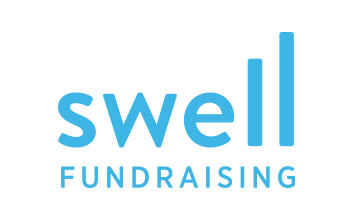You’re wrapping up your fundraising campaign, tallying your donation totals, and congratulating your team on a job well done. However, your work isn’t complete until you’ve acknowledged and thanked donors for their generous contributions.
Thanking donors is an essential part of the fundraising process because it helps build the groundwork for strong, long-lasting donor relationships. When you thank donors effectively, you can increase the chances that they’ll be willing to help out the next time you have a fundraiser.
With that in mind, we’re going to highlight six tips for thanking your donors after your campaign concludes:
- Store donor information in your CRM.
- Thank donors in their preferred way.
- Show donors the impact of their support.
- Don’t neglect your campaign’s volunteers.
- Call donors to say thanks.
- Ask donors for feedback.
Thanking donors after they give should be the first step in a longer donor stewardship process. This process should involve continually engaging with donors, inviting them to exciting new opportunities, and expressing your appreciation for their ongoing support. Let’s take a closer look at how you can optimize your thank you messages.
1. Store donor information in your CRM.
Thank you messages are much more meaningful when they’re personalized. Thanking your donors by name, referencing their specific donation amounts, and including other specific details about their engagement with your organization makes your messages memorable and impactful.
For easy access to specific donor information, make sure to store donor data in your nonprofit CRM, otherwise known as your donor management system. Throughout the donation process, you’ll be able to gather donor information such as each donor’s:
- Name
- Contact information
- Gift amount
- Payment information
Then, you can create unique profiles for each donor and update them with the information you receive throughout your campaigns. When your online donation platform and CRM integrate, you’ll be able to transfer data seamlessly between these platforms, reducing your team’s manual workload.
Consider the differences between these two thank you messages:
“Dear Valued Donor, Thank you for supporting our recent campaign! We can’t achieve our goals without your generous contributions.”
“Dear Maria, Thank you for your gift of $50 to our Save the Kittens campaign! Your generous support ensured that local homeless kittens have the supplies they need to thrive at our shelter.”
The first message is generic and doesn’t acknowledge the donor as an individual. On the other hand, the second message uses specific data to show the donor that their contributions didn’t go unnoticed. Taking this data-driven approach will make your donors feel much more appreciated and boost the likelihood that they’ll give in the future.
2. Thank donors in their preferred way.
Your thank you messages shouldn’t follow a one-size-fits-all format. Not all donors will even want to be thanked publicly, with many preferring to remain anonymous. Donors will respond more positively to thank you efforts that align with their interests.
If donors have expressed a preference in the past for how they’d like to be thanked, honor that preference by noting it in your donor management system. If your donation form includes a section asking donors about their preferred form of contact, this is a helpful starting point for finding out a donor’s preference.
Whether you thank a donor via a handwritten note, email message, or social media shout out, make sure you carefully consider which types of messages your donors will be most receptive to.
3. Show donors the impact of their support.
According to the Millennial Impact Report, 90% of Millennials are motivated to give by a compelling mission, not because of the organization itself. That means it’s important to show donors the impact that their donations had on your cause and mission, not on your nonprofit.
Make sure your thank you messages highlight what you were able to accomplish with the help of their donations. Perhaps your campaign’s goal was to raise funding to refurbish your volunteer orientation room. Let donors know if you reached your goal and, if so, when you’ll kick off the renovations. Send photo updates so donors can see the impact of their support.
4. Don’t neglect your campaign’s volunteers.
If your fundraising campaign was larger in scale, such as a major fundraising 5K event or auction, you probably had volunteers support your team at the event. You might also find that the volunteers donated more than their just time—some probably made a financial contribution to your campaign. Aside from making them feel appreciated, thanking your volunteers can motivate them to make a donation to your organization in the future.
Fundraising Letters offers a few tips for creating effective volunteer thank you letters:
- Be specific about what each volunteer did during your event. Whether they chaired the auction, managed check-in, or helped send out invitations, thank volunteers for their specific contributions.
- Send volunteers the photos you took of them at the event. Volunteers will appreciate having high-quality photos of themselves to remember your event.
- Share your event’s success. Update volunteers on any goals they helped your organization achieve during your campaign event.
Volunteers contribute their time, energy, and talents to help ensure the success of your campaign events. Thanking them properly shows you appreciate their efforts and can encourage them to sign up or donate in the future.
5. Call donors to say thank you.
Phone calls can be a particularly helpful tool for expressing appreciation. According to a Bloomerang study, donors are retained 41.24% of the time if they receive one phone call within 90 days of making their gift. That percentage jumps to 58.21% if more than one phone call is made within that 90-day period.
Make sure you use the donor information stored in your nonprofit CRM to personalize your phone conversations. Thank donors for their specific donation amount and reference any other interactions they’ve had with your organization, whether they’ve attended an event recently or filled out a survey.
6. Ask donors for feedback.
Asking donors for feedback can be a great way to start building stronger relationships with them. This shows donors that you value their input and gives your organization access to insightful feedback that can help you optimize future campaigns.
In your post-campaign follow-up messages, send donor surveys with questions such as:
- How did you find out about the campaign?
- What influenced you to donate?
- How would you rate the donation process on a scale of 1-10?
- How can we make the donation process more efficient?
- Did you have a clear idea of how donations were going to be used?
- How likely are you to donate to another campaign?
Once the survey period concludes, send a follow-up message to respondents summarizing the feedback you received and letting donors know your plan for incorporating their input into future campaigns. Donors will appreciate knowing that their comments are being taken seriously.
A thorough appreciation strategy is the cherry on top of a successful fundraising campaign. Showing gratitude to donors lays the foundation for strong relationships and repeat donations. Plus, it helps build your nonprofit’s reputation as an organization that cares about cultivating a strong, engaged supporter community.

Author: Ann Fellman
As the Chief Marketing Officer at Bloomerang, Ann is responsible for the company's overallthought leadership, brand, marketing, and community outreach programs that work to strengthen relationships with customers and the broader nonprofit community. Ann brings with her more than 24 years of experience in business-to-business (B2B) marketing in the technology industry, including time spent working at a nonprofit organization.




